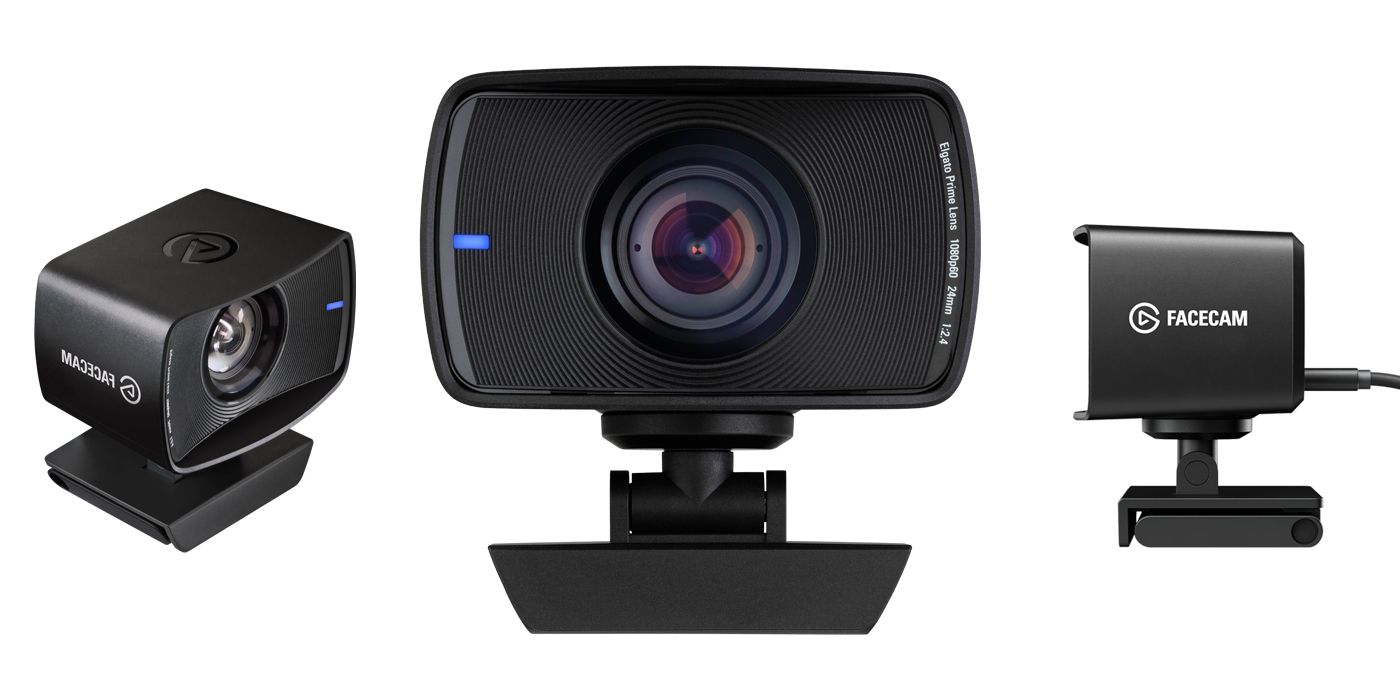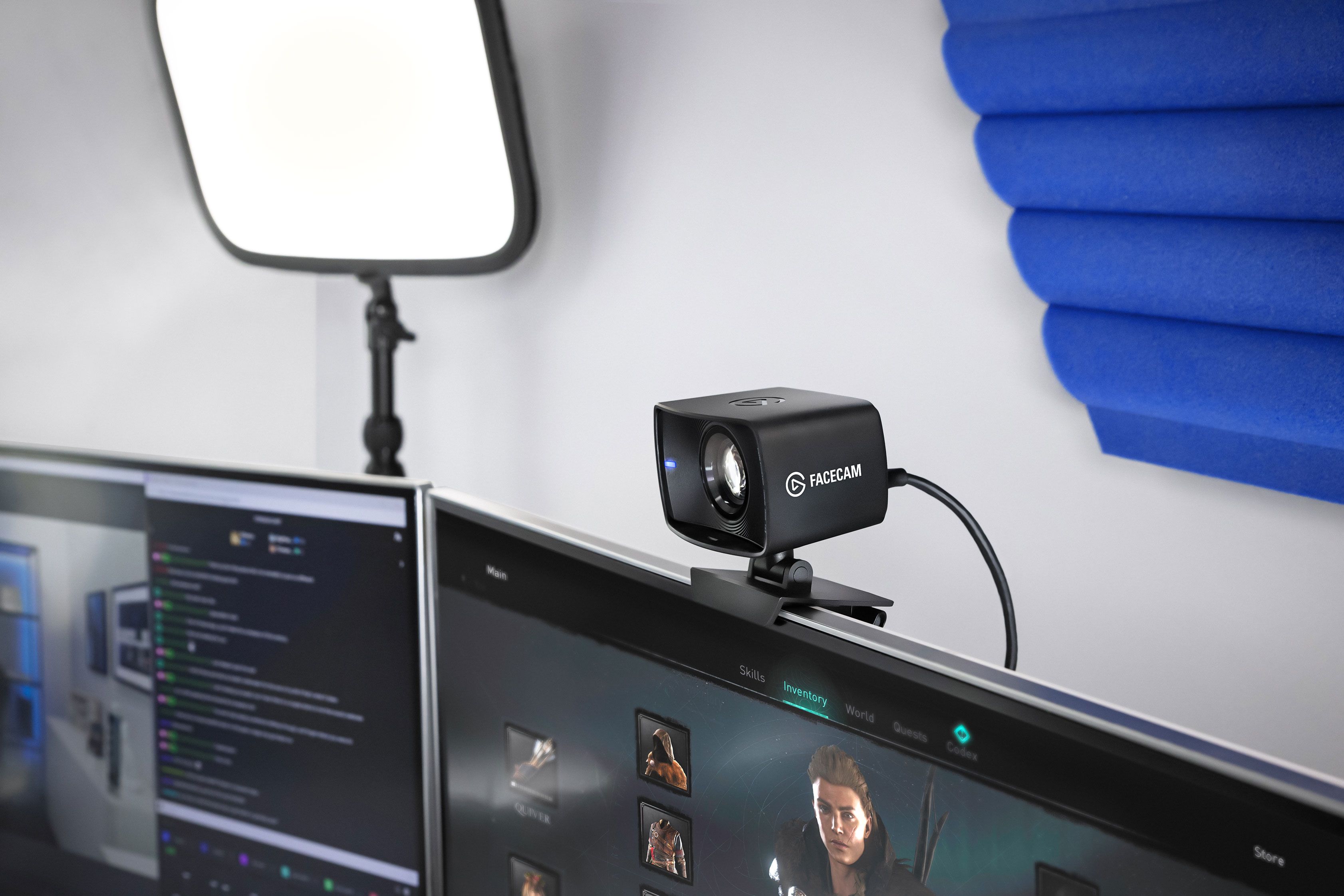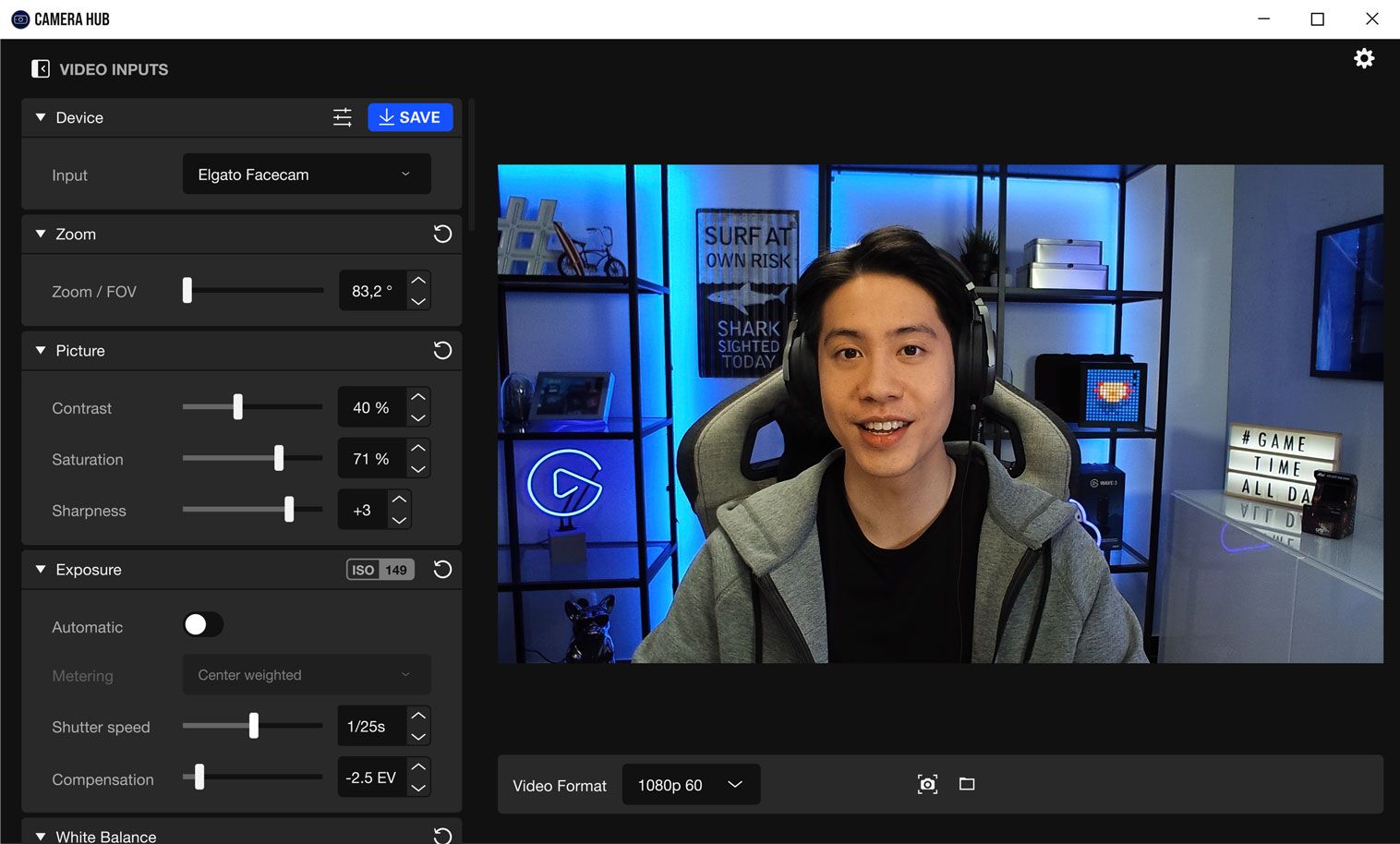After some clever teasing on social media and through influencers, Elgato’s Facecam has finally been revealed. For a company that has been delivering products designed to improve the lives of streamers and content creators, it is surprising that it has taken so long for Elgato to finally make a Facecam. But having spent plenty of time with the webcam it is clear that Elgato wanted to do what it does best: listen to the market and respond with a product that knocks it out of the park.
The Elgato Facecam slots right into the middle of the company’s selection of video input devices. At 1080p 60 fps, it’s significantly more high quality than the webcam app that allows users to turn any mobile device into a webcam, but it’s not at the top of the spectrum like the 4K Cam Link, which allows content creators to use multiple DLSR cameras as input devices/webcams. Rather, the Elgato Facecam is a high-quality webcam that delivers a clear picture and supports a ton of customization.
Elgato has designed the Facecam to focus on its visual presentation and little else. As a result, the webcam does not come equipped with a microphone and it does not support any form of auto focus. Like a DSLR with a single lens, the Facecam uses a 24mm Prime lens to deliver its picture. With a focal length that starts at 12 inches away from the camera and extends to 47 inches away, the Facecam is exactly that. It puts the focus on the subject and some background elements, but it isn’t constantly trying to dial in on a specific object. The picture stays extremely clear within that range, and it is perfectly suited to a content creator’s face cam on their videos.
The design of the Prime Lens and the coatings on it are meant to enhance the quality of the picture and eliminate any of the typical visual blemishes (lens flares, for example). Right out of the box, the picture is stunning with no noticeable noise under a variety of lighting conditions. The addition of 60 fps capture is not going to be a huge selling point for the average content creator but being able to match the frame rate of the webcam with the frame rate of a game brings a nice homogeneity to the presentation.
For a $199 webcam, some might not realize all the tech that is running under the Facecam’s hood, but it is extremely impressive. The Prime Lens does a lot of the noticeable legwork, but the Sony Starvis CMOS Sensor helps the picture shine on streams and videos. That is really where the price tag comes in and what makes the Facecam standout – a sensor that can rival tons of photo cameras in terms of its picture quality. And as a bonus, the PCB inside the Facecam includes a Flash Memory chip for saving settings directly onto the webcam. This eliminates the frustration of booting up the webcam and finding that the settings magically changed overnight.
Elgato tends to approach its new devices with an understanding of industry preferences along with some smart, and potentially risky design choices. In the case of the Facecam, they made a high-quality webcam that is a step above the basic models in terms of its video capture. Eliminating the microphone might seem like an odd choice compared to an average webcam, but the market for the Facecam (streamers, content creators, etc.) are going to have a high-quality mic anyway. But as the name implies, this is a camera meant to support a facecam, be it in a small box on a stream, a Zoom presentation, or just a personal recording. The Prime Lens cannot jump between a close-up subject and then a distant subject and keep both of those in focus. Only the items within the aforementioned range will stay in focus, but for most content creators that’s all they need.
Beyond the design of the lens itself, the Facecam hits all the industry standards. It has a blue indicator light to show the user whenever the webcam is active. A sturdy clamp for securing the Elgato Facecam to any monitor or thin surface. And removing the clamp reveals a ¼-inch thread for attaching to a camera mount, tripod, or ring light housing. Like the Elgato Wave 3, the Facecam is made from the same brush-finish plastic that some say has a “cheap” feel, but the device itself is extremely sturdy. It takes a good amount of pressure to change the viewing angle on the Facecam, ensuring that it won’t lose its framing with a slight jostle.
The Elgato Facecam is also supported by a software called Camera Hub that is as customizable or hands-off as users want it to be. Plugging in the Facecam and turning on Camera Hub for the first time will dial in settings that will be suitable for most users. The software automatically controls ISO (a fancy term for controlling the brightness of the picture based on light sources), contrast, white balance, and plenty of other categories. If the users so choose, they can set up their lighting and hit the refresh button on each of the categories and the Camera Hub software will give them the best possible presentation under those settings. More advanced users, however, can fiddle with several individual sliders and dial in everything on their own. You can also use the settings to achieve a more stylized look through Camera Hub.
Altogether, the lens, the sensor, and the Camera Hub software combine to make for another homerun from Elgato. The Facecam may be late to the party as far as webcam options go, but in typical Elgato fashion, few will even remember when the device entered the fray. The only barrier to entry is going to be the price, which puts the Facecam into that sweet spot of creators who want to invest in improving their content but aren’t ready to pour thousands of dollars into their setups yet. The Elgato Facecam slots right into the biggest category and it’s to see the device being as ubiquitous and essential for a streamer’s arsenal as the Stream Deck or the Wave Link. There is little doubt that the Elgato Facecam will become the standard when it comes to webcams for content creators and streamers.
The Elgato Facecam is available for $199.



